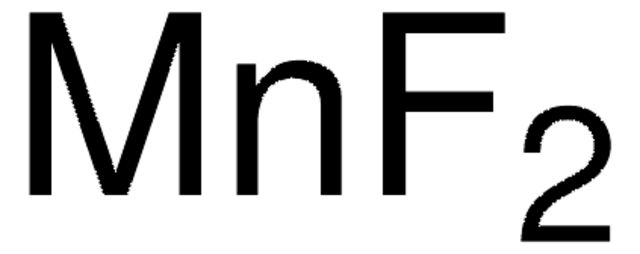추천 제품
Quality Level
분석
99%
양식
powder
분자량
Mw 74.69 g/mol
구성
NiO
환경친화적 대안 제품 특성
Design for Energy Efficiency
Learn more about the Principles of Green Chemistry.
sustainability
Greener Alternative Product
색상
green
입자 크기
−325 mesh
<44 μm
density
6.67 g/mL at 25 °C (lit.)
6.67 g/mL
응용 분야
battery manufacturing
환경친화적 대안 카테고리
SMILES string
[Ni]=O
InChI
1S/Ni.O
InChI key
GNRSAWUEBMWBQH-UHFFFAOYSA-N
유사한 제품을 찾으십니까? 방문 제품 비교 안내
일반 설명
We are committed to bringing you Greener Alternative Products, which adhere to one or more of The 12 Principles of Greener Chemistry. This product has been enhanced for energy efficiency and is intended for Molecular Solar Thermal Energy Storage Systems (MOST). Click here for more information.
Nickel(II) Oxide (NiO) is a black or greenish-black inorganic compound that serves as an important material in various industrial applications. It is commonly utilized in battery manufacturing, where it plays a crucial role in the production of nickel-based batteries. Its fine particle size, typically −325 mesh (<44 μm), enhances its reactivity and performance in electrochemical applications. In addition to battery manufacturing, Nickel(II) oxide is also used in ceramics, supercapacitors, and as a catalyst in chemical reactions. Its versatility makes it valuable in various sectors, including electronics and materials science.
Nickel(II) Oxide (NiO) is a black or greenish-black inorganic compound that serves as an important material in various industrial applications. It is commonly utilized in battery manufacturing, where it plays a crucial role in the production of nickel-based batteries. Its fine particle size, typically −325 mesh (<44 μm), enhances its reactivity and performance in electrochemical applications. In addition to battery manufacturing, Nickel(II) oxide is also used in ceramics, supercapacitors, and as a catalyst in chemical reactions. Its versatility makes it valuable in various sectors, including electronics and materials science.
애플리케이션
- Benchmarking Nanoparticulate Metal Oxide Electrocatalysts for the Alkaline Water Oxidation Reaction: This study evaluates the electrocatalytic performance of nickel oxide for water oxidation, important for material scientists working on energy conversion technologies (S Jung et al., 2016).
신호어
Danger
유해 및 위험 성명서
Hazard Classifications
Aquatic Chronic 4 - Carc. 1A Inhalation - Skin Sens. 1 - STOT RE 1 Inhalation
표적 기관
Lungs
Storage Class Code
6.1C - Combustible acute toxic Cat.3 / toxic compounds or compounds which causing chronic effects
WGK
WGK 1
Flash Point (°F)
Not applicable
Flash Point (°C)
Not applicable
개인 보호 장비
Eyeshields, Faceshields, Gloves, type P3 (EN 143) respirator cartridges
Genqiang Zhang et al.
Nanoscale, 5(3), 877-881 (2012-12-15)
One-dimensional hierarchical hollow nanostructures composed of NiO nanosheets are successfully synthesized through a facile carbon nanofiber directed solution method followed by a simple thermal annealing treatment. With the advantages of high electro-active surface area, carbon nanofiber supported robust structure and
N Sattarahmady et al.
Biosensors & bioelectronics, 48, 197-202 (2013-05-21)
Lichen-like nickel oxide nanostructure was synthesized by a simple method and characterized. The nanostructure was then applied to modify a carbon paste electrode and for the fabrication of a sensor, and the electrocatalytic oxidation of acetylcholine (ACh) on the modified
Daniele Perego et al.
Nanotechnology, 24(4), 045302-045302 (2013-01-08)
In the present paper, a novel method to fabricate ordered arrays of Au/NiO/Au nanowires is described, with the aim of filling the gap between the fundamental study of the electrical properties of scattered single nanowires and the engineered fabrication of
Salvador B Muñoz et al.
Inorganic chemistry, 51(23), 12660-12668 (2012-11-13)
The synthesis and characterization of new tris(carbene)borate ligand precursors containing substituted benzimidazol-2-ylidene and 1,3,4-triazol-2-ylidene donor groups, as well as a new tris(imidazol-2-ylidene)borate ligand precursor are reported. The relative donor strengths of the tris(carbene)borate ligands have been evaluated by the position
Huaixiang Li et al.
Biosensors & bioelectronics, 47, 225-230 (2013-04-16)
A novel photoelectrochemical hydrogen peroxide (H2O2) sensor was constructed with platinum (Pt) and nickel hydroxyl-oxide (NiOOH) double layers modified n-silicon electrode (NiOOH/Pt/n-n(+)-Si). About 40nm Pt layer and about 100nm Ni layer were successively coated on the front surface of n-n(+)-Si
Global Trade Item Number
| SKU | GTIN |
|---|---|
| 399523-10G | |
| 399523-100G | 4061831984620 |
자사의 과학자팀은 생명 과학, 재료 과학, 화학 합성, 크로마토그래피, 분석 및 기타 많은 영역을 포함한 모든 과학 분야에 경험이 있습니다..
고객지원팀으로 연락바랍니다.







